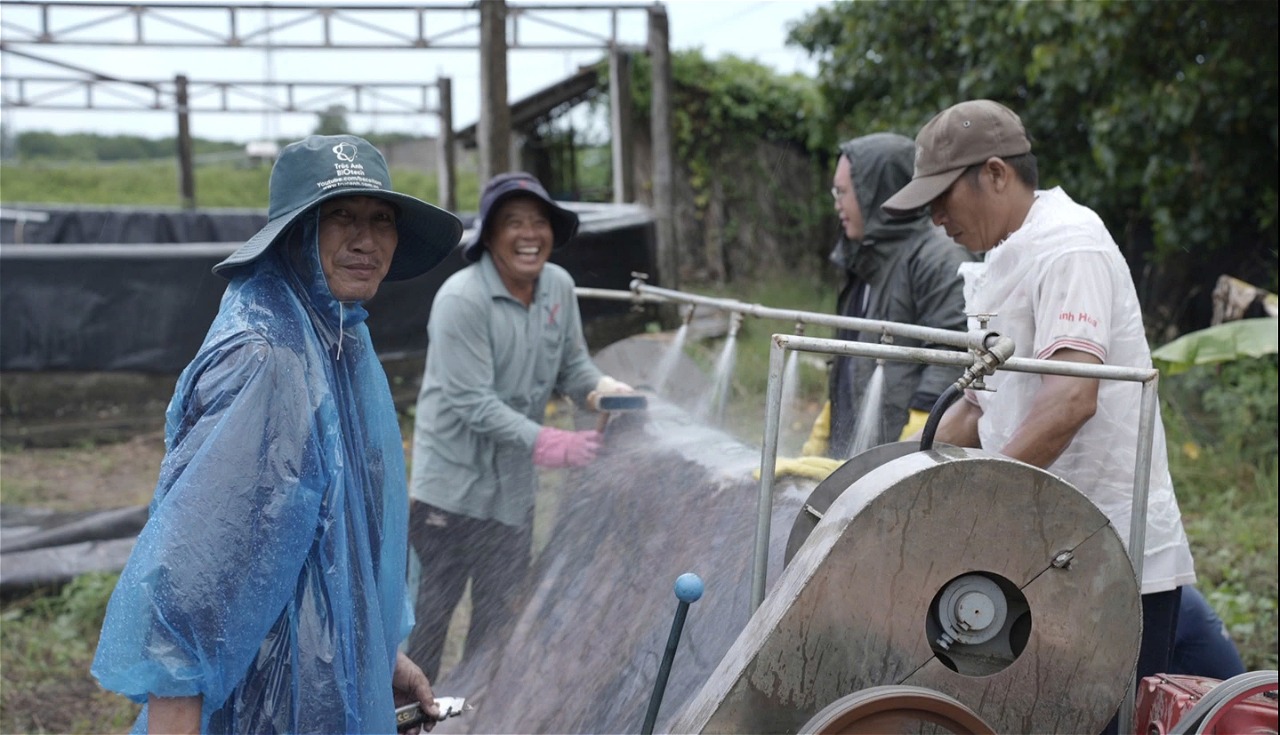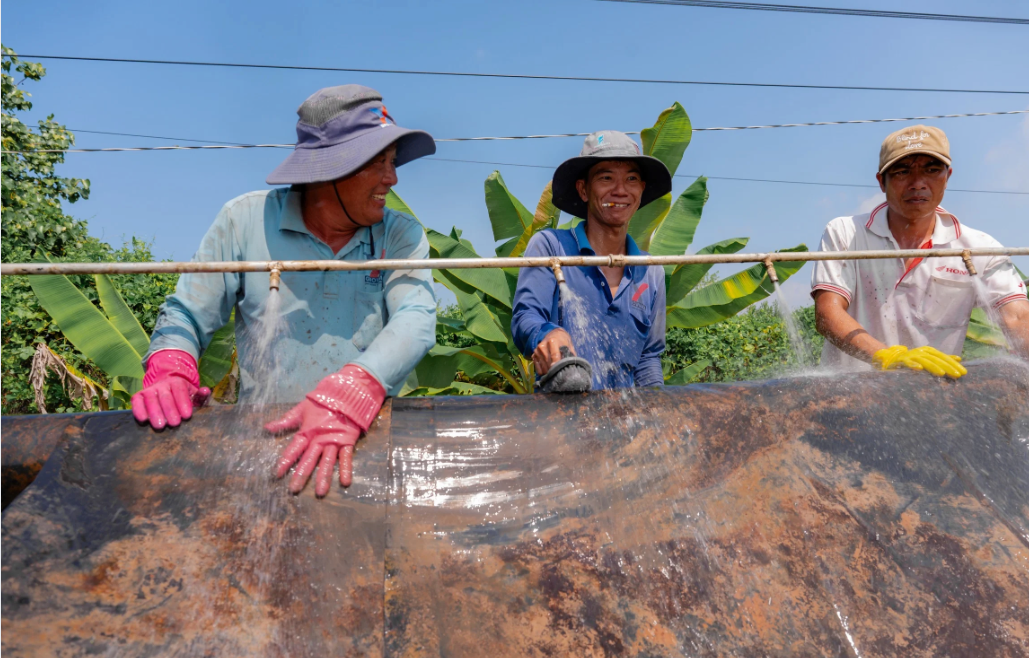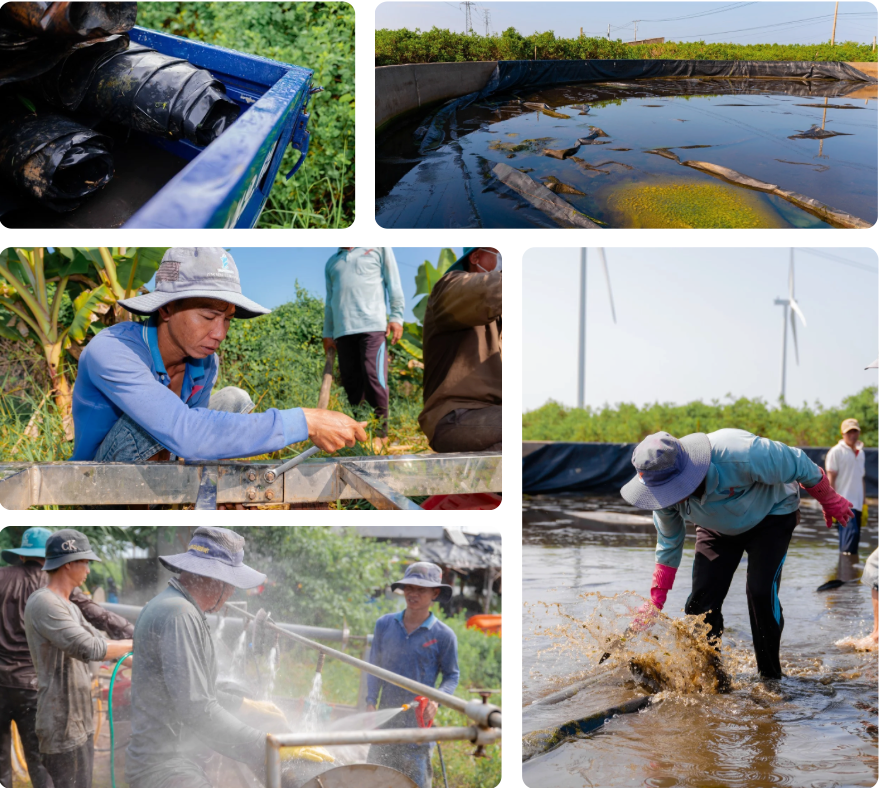From Waste to Value: How We're Transforming Aquaculture Plastic in the Mekong Delta

Evergreen Labs and Dow have developed a proven circular economy model that transforms discarded aquaculture pond liners in Vietnam's Mekong Delta into valuable recycled products, addressing a critical waste management challenge while creating economic opportunities for local communities. The comprehensive Aquaculture Plastic Waste Recovery Playbook documents our journey from concept to implementation, sharing practical lessons on everything from regulatory navigation and partnership development to custom equipment design and multi-stream processing strategies. By achieving over 70% material recovery rates, reducing carbon emissions by up to 70% compared to virgin materials, and demonstrating economic competitiveness, we've shown that circular economy solutions can be both environmentally beneficial and financially sustainable. Now we're making this knowledge freely available to enable replication across aquaculture regions worldwide, proving that accessible sustainability through decentralized innovation can turn environmental challenges into opportunities for all.
A Replicable Model for Circular Economy Solutions in Aquaculture Regions
In Vietnam's Mekong Delta, thousands of tons of plastic pond liners are discarded annually from intensive shrimp and fish farming operations. For years, these materials ended up burned, buried, or polluting waterways. But what if this waste stream could become a valuable resource instead?
Working alongside Dow, we've spent the past years developing and refining a practical solution to this challenge. Today, we're sharing our learnings in the Aquaculture Plastic Waste Recovery Playbook – a comprehensive guide for implementing sustainable waste collection and processing systems that achieve both environmental impact and economic viability.

The Challenge We Set Out to Solve
The aquaculture industry in the Mekong Delta relies heavily on polyethylene pond liners that need replacement every few years. With intensive farming operations across the region, this creates a substantial waste management challenge. Farmers faced disposal costs, communities dealt with pollution, and valuable material resources were being lost.
We saw an opportunity to close the loop.
Building a System That Works
Our approach wasn't just about collecting plastic – it was about creating a complete circular economy system that works for everyone involved:
For Farmers: We established transparent pricing and collection systems that turn waste disposal from a cost into a potential revenue stream, while providing equipment and training support.
For Communities: We created local employment through collection and processing operations, investing in skills development and building environmental awareness.
For the Environment: We're diverting plastic waste from landfills and waterways while reducing carbon emissions by up to 70% compared to virgin material production.
For the Market: We're producing quality recycled materials that can compete with virgin plastics across multiple product streams – from new pond liners to construction materials and consumer products.

Innovation on the Ground
One of our key innovations was developing custom collection equipment designed specifically for rural aquaculture conditions. These portable machines can be transported via motorbike or trike to remote farm locations, processing pond liners on-site with a capacity of 130 m²/hour. The equipment combines collection and washing operations, is built with locally available materials, and can be maintained by locally trained staff.
This wasn't about importing expensive, complex technology. It was about designing practical solutions that work in real-world conditions and can be operated sustainably by local communities.
The Multi-Stream Approach
Economic sustainability required diversifying our product outputs. We developed three processing streams:
- High-value recycled pellets that meet virgin material specifications for premium applications
- Standard products like tarpaulins and shade nets for cost-competitive markets
- ReForm Plastic boards for furniture, construction materials, and signage
This diversification creates market resilience and maximizes the value recovered from collected materials.

Lessons Learned: The Reality of Implementation
We want to be transparent about the challenges we faced. Building this system took longer than initially planned – regulatory approvals required 12-18 months, partnerships evolved and changed over the project timeline, and we had to continuously adapt our approach based on real-world feedback.
Some key lessons:
Early government engagement is essential. We learned to present clear environmental and economic benefits, establish regular communication channels, and plan for extended approval timelines from the start.
Partnership flexibility matters. We maintained multiple options for critical functions, built internal capabilities to reduce external dependencies, and created performance-based agreements with clear metrics.
Quality control is non-negotiable. Effective recycling requires rigorous contamination control from initial collection through processing, with consistent testing and documentation at every stage to ensure material traceability.
Timeline flexibility is crucial. We implemented milestone-based plans with clear decision points for strategy adjustments, always maintaining alternative pathways when things didn't go as expected.
Sharing What We've Learned
The playbook we've developed documents everything from pre-implementation assessment and stakeholder mapping to technical infrastructure planning, collection system design, and financial sustainability frameworks. It includes detailed guidance on regulatory navigation, risk management, and scaling strategies.
But more than a manual, it represents our commitment to accessible sustainability through decentralized innovation. We believe circular economy solutions should be available to those who need them most, not locked away as proprietary knowledge.

A Model for Replication
While this project focused on the Mekong Delta, the model is designed for replication across aquaculture regions worldwide. The framework can be adapted to different regulatory environments, market conditions, and local circumstances – anywhere there are:
- Intensive shrimp or fish farming operations
- Significant pond liner replacement cycles
- Access to recycling markets
- Government interest in circular economy solutions
We've now processed hundreds of tons of plastic waste annually, achieved material recovery rates exceeding 70%, created local employment opportunities, and demonstrated that recycled materials can compete economically with virgin alternatives.
Looking Ahead
This is just the beginning. As we scale operations and refine our processes, we're focused on reaching a regional hub capacity of 3,000+ tons per year while supporting the development of additional sites across Southeast Asia.
We're also exploring franchise and licensing models to enable local operators to implement this system in their communities, supported by comprehensive training programs and ongoing technical consultation.

Join the Movement
Circular economy solutions work when they create value for everyone in the system. By transforming waste into valuable products, creating economic opportunities, and reducing environmental impact, we can build systems that are both sustainable and scalable.
Whether you're in aquaculture, waste management, government, or simply passionate about sustainable solutions, we invite you to explore the playbook and consider how these approaches might apply in your context.
Download the full Aquaculture Plastic Waste Recovery Playbook here: Dow Aquaculture Plastic Waste Recovery Playbook_Sep 2025_compressed.pdf
Contact us to discuss implementation in your region: info@evergreenlabs.org
This project was developed in partnership with Dow Chemical as part of our shared commitment to building circular economy solutions that address pressing environmental challenges while creating economic opportunities for local communities.

